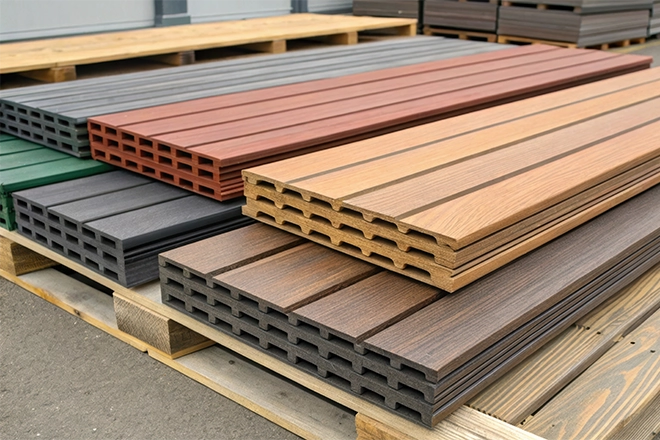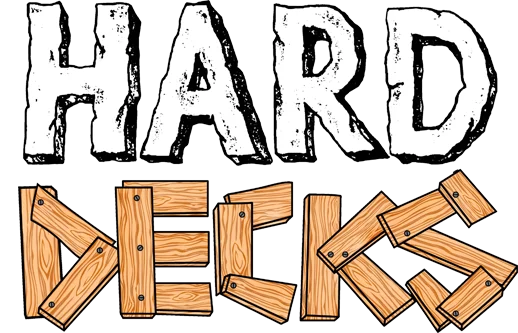
Choosing the Right Deck Tone for Your Home
What if your deck color could make your whole backyard feel brand new? And what if choosing the right one was easier than you thought?
In this post, you’ll learn about the most popular composite deck colors, what makes each one stand out, and how to choose the perfect match for your home and style.
By the end, you’ll feel confident picking a color that looks great for your deck installation project in Illinois.
What Are the Most Popular Composite Deck Colors?
When it comes to composite deck colors, a few shades continue to lead the pack thanks to their versatility and timeless appeal.
- Grays: Light silver to charcoal tones that suit modern and coastal homes
- Browns: From chestnut to espresso, perfect for traditional or rustic looks
- Tans and Taupes: Neutral blends that complement a wide range of siding
- Reds: Warm hues like cedar and brick that mimic exotic hardwoods
- Multi-Tonal Boards: Blended shades designed to look like real wood grain
Gray Composite Deck Colors
Gray composite decking is one of the most flexible color choices out there.
Light grays give off a soft, coastal feel. Deeper charcoals add a modern edge to any outdoor space.
Grays work well with white, blue, or tan homes and can blend in or stand out depending on the trim and railing you pair them with. They’re also a smart option if you want a color that won’t compete with bold furniture or lush landscaping.
Lighter gray shades stay cooler in the sun, making them ideal for hot climates. Since gray is such a neutral base, it leaves room for your outdoor style to grow and change over time.
Brown Composite Decking
Brown is one of the most popular composite deck colors for good reason.
It gives your space a grounded, natural feel and pairs well with everything from brick to stone to beige siding.
Lighter browns like chestnut or saddle feel welcoming and cozy. Deeper browns like espresso or dark walnut lean more elegant and refined.
If you want your deck to look like real wood, brown boards are the way to go. Many are designed with grain patterns and multi-tonal streaks to mimic natural variations, which helps hide wear over time. These shades also blend well with earth-toned landscaping and outdoor space decor.
Brown works especially well for traditional homes or rustic designs. But with the right contrast—like black railings or white trim—it can also feel modern and intentional.
Tan and Taupe Composite Decking
Tan and taupe boards are subtle and timeless.
They often reflect the color of natural wood after years of sun exposure, giving your deck a nice weathered wood look. These shades are ideal for homeowners who want their deck to blend in rather than stand out.
These lighter tones don’t absorb as much heat, making them more comfortable in full sun. They also pair nicely with warm-toned siding or natural materials like brick, stone, or stucco.
If you’re not sure what to choose, a soft taupe is often a safe middle ground. It won’t overpower your exterior, but it still adds a polished finish to your outdoor space.
Red Composite Decking
Red-toned composite boards add richness and warmth to a backyard.
Reds like cedar or reddish mahogany make a strong statement and are ideal for those who want their deck to stand out.
These colors work well with red or brown roofing and warm siding tones. However, because they’re bold, they’re best paired with neutral railings or trim to balance the look.
Red boards also give off a tropical or exotic feel, especially when combined with dark railings and lush landscaping. If you’re going for a vibrant or luxurious atmosphere, red might be the right call.
Multi-Tonal Composite Decking
Multi-tonal deck boards are designed to look like real wood with built-in texture and color variation.
These are a great choice if you’re worried about fading, footprints, or general wear showing over time.
This style adds depth and character to your deck. It works well in almost any color family and can help your space look more high-end.
It’s also a smart pick if you’re creating patterns, borders, or inlays as part of your design.
How to Choose the Right Decking Color for Your Illinois Home
Match or Complement Your Home’s Exterior
Start by looking at your siding, trim, roof, and other major surfaces.
- Gray and blue homes often pair well with lighter grays or dark browns.
- Beige or taupe homes work nicely with gray, tan, or medium brown.
- White homes match with almost anything—you can keep it simple or go bold with contrast.
Try pulling in accent colors, too. For example, if your home has black shutters or a charcoal roof, a matching deck tone will create a unified look.
Consider Climate and Sunlight
Some colors feel better underfoot, depending on where you live.
Lighter shades like taupe, gray, and sandy brown stay cooler in direct sun. Darker tones may absorb heat, which can be uncomfortable if you like to go barefoot on your deck.
Also, think about how much sunlight your deck gets. A fully shaded area can handle a darker tone without overheating. In full sun, lighter boards might be the better pick.
Composite decking handles heat much better with the technological advancements it has undergone. This makes color choice less of an issue!
Evaluate Outdoor Furniture and Décor
Already have outdoor furniture, or are you planning to invest in some? Make sure your deck color doesn’t clash with the cushions, pillows, or structures you use.
Brown boards match earthy decor and traditional sets. Gray boards go better with sleek, modern designs. Tans and taupes are easy to coordinate with almost anything.
The key is choosing a base color that allows your style to evolve.
Factor in Home Exterior Style
Your home’s overall style can also influence your decision:
- Tan or Taupe Homes: Look great with gray for contrast or tan for a seamless match
- White Homes: Offer the freedom to go light, dark, or multi-tonal
- Gray Homes: Work with darker gray or contrast with warm browns
- Blue Homes: Pair well with grays or warm browns for a coastal vibe
- Multi-Colored Homes: Stick to a neutral deck tone to keep the look from becoming too busy
Order Samples and Test in Natural Light
The best way to know how a color will actually look? Order a sample. Or better yet, two or three. Place them next to your house’s siding and check them at different times of the day.
Light, shadow, and surrounding colors can completely change how a board looks. Getting a few samples lets you explore your options and feel confident before you commit.
Reflect on Personal Color Preferences
It’s your deck—you should love how it looks.
Think about the colors you’re naturally drawn to indoors. Do you lean toward cooler tones or warmer hues? Do you like contrast or calm, blended tones?
Let your instincts play a role. Your deck should feel like an extension of your personal style, not just your house.
Composite decking ideas to go with your color choice.
Make the Right Call on Color with Hard Decks
Whether you’re leaning toward a classic brown or considering cool grays, Hard Decks can bring your vision to life with expert composite deck installation. We’ll help you select the perfect shade, then install a deck that’s built to last and designed to impress.
Ready to transform your outdoor space? Fill out our contact form today, or give us a call to get started.
